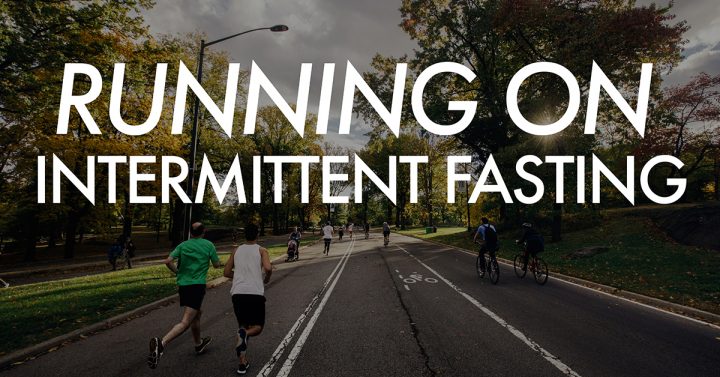
Let me start this by saying that we do not necessarily advocate Intermittent Fasting in Pinoy Fitness or any specific diet for that matter. Diets are something that you experiment with carefully—and with the proper guidance of nutritional science experts—so that you can figure out which one best work for you. At the end of the day, we are advocates of healthy lifestyles, so finding a diet that you can stick with for the long-term without compromising your health, is one that we’ll always approve of.
For those who’re new to the concept, we suggest that you do your research first, before jumping on the train for Intermittent Fasting. There is a fairly decent amount of resources you can refer to on the internet so you can learn as much as you can and need to about what it is, exactly and how you can best do it (try: What is Intermittent Fasting and How Do You Survive it? And Intermittent Fasting—is it Safe?).
Related Article: What is Intermittent Fasting and How Do You Survive It?
On the other hand, for those who’ve been on the Intermittent Fasting bandwagon and are trying figure out how to incorporate your workouts during your fasting state in order to better maximize its benefits in terms of weight-loss, then read further on.
Now that’s established, we proceed with the real matter of discussion: how in the world do you run on Intermittent Fasting? Literally.
As both a runner and Intermittent Fasting dieter, it was honestly a struggle to marry the two concepts at the start because fasted running sessions left me light-headed and dizzy. However, after much research and months of trials and errors, doing fasted runs have become easier to do. Here’s how:

1. Drop the intensity if you’ve been fasting
This is not to say that you shouldn’t amp up your workouts—especially if you’re training for a race. If you need to train harder on certain days, feel free to time your workout during your feeding state. But if it’s just your daily maintenance runs or gym sessions, don’t push yourself too hard to run/lift like you’re trying to hit a new PR every day.
If you’re going to work out in a fasted state, keep in mind that your body is running on very low levels of glycogen, so if you’re not too careful with the intensity, you might end up feeling light-headed, weak which will just leave you with misplaced frustration on your performance.
Also, if you’re not too careful with the intensity of your workouts during your fasted stated, you might also end up burning muscle, which is something we definitely don’t want to happen. Match your eating pattern to the intensity of your workout. So, if you’re going to be training for longer periods, or lifting more, don’t hesitate to do it during your feeding window.

2. Break your fasts the right way
When it’s time to break the fast, the first thing you should reach for in the kitchen are meals that are packed with complex carbs and proteins so you recover appropriately.
Dismiss the misconception that you can eat junk after a fast (all the more a fasted work-out) because it will defeat the purpose of both your diet and training. Go for nutrient-rich foods, that are just as filling as they are nourishing for your body.

3. Give your body time to adjust to your new diet
This is so that your body has a chance to adjust to the changes and figure out where it can get the energy to fuel itself for normal, everyday activities. Changing your eating pattern can be stressful to the body and all the more stressful if you do it in an abrupt manner.
Start with baby steps in terms of cutting down the time for your feeding window, and then gradually decrease it to an amount of time you’re comfortable with. Start slowly with fasting-feeding ratios of 12:12. When you’re used to that, try to increase it to 14:10, 16:8, and so on, but don’t introduce exercise just yet.
Once you’ve decided a ratio and schedule that works for you and you’ve got the habit going, that’s when you reintroduce running or training into the routine, again with baby steps; measure your performance on different mileages of runs during a fasted state and take it easy so you don’t feel to faint or light-headed during and after the run.
Additional note: given that you need time to allow your body to adjust to these changes, we highly recommend that you not start a new diet when you have any upcoming races, for good measure.

4. Be patient with and listen to your body
On a slightly similar note as point number 3; you have to understand that changes won’t be seen immediately, and adjustments don’t happen at your command, so don’t go getting so easily frustrated with your body if your performance suddenly drops.
Think of it as you building back from the ground, up. So, expect that you’ll be going through somewhat similar struggles to that of when you were just beginning to run. Listen to your body carefully when it’s getting too much, and adjust certain things to your training regimen, or diet, as necessary.
All of that given, I hope all of you found this helpful in terms of maximizing the fat-burning benefits of your Intermittent Fasting diet. But then again, when it comes to your well-being, no benefit should ever outweigh the risk of a new diet. So, if you’ve given this a try and you find that it isn’t working to your favor, then go ahead and shift your diet as needed.
Got other tips on doing a fasted workout? Feel free to share them! We’d love to learn more!








